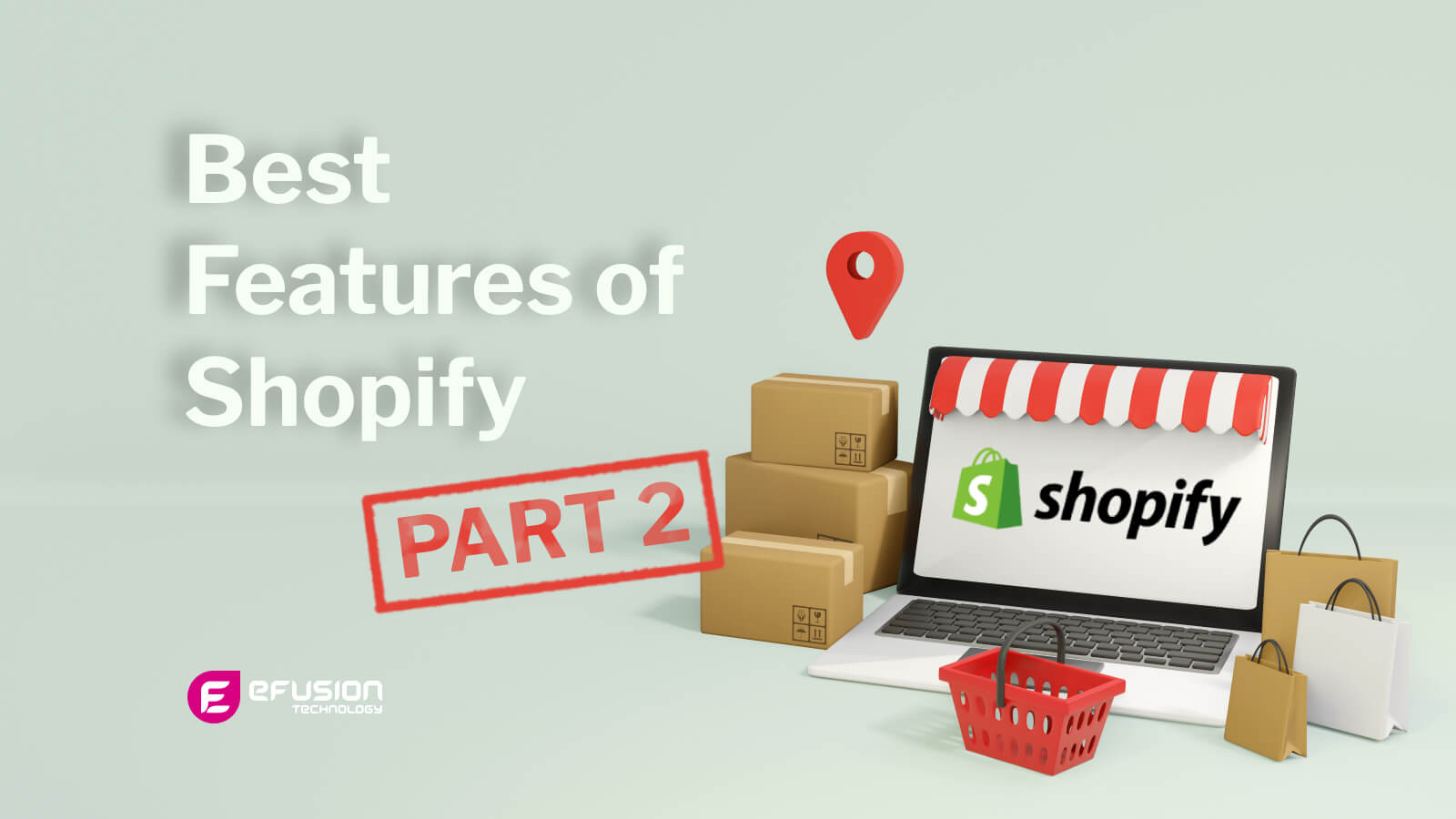
In our previous article, we covered four features of Shopify that we think you will find useful for your eCommerce business. In this article, we cover two more features that we think you shouldn’t miss out on.
1) Facebook Dynamic Retargeting Ad
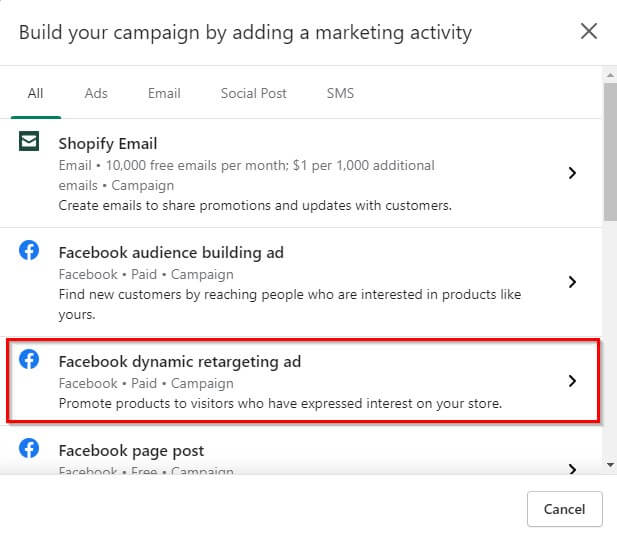
Personalisation is a very powerful tool. To have an effective marketing campaign, giving your customer personalised and relevant information is crucial in customer engagement and retention. Facebook Dynamic Retargeting Ad does just that, serving ads to your customers showcasing the exact products they want to see.
Shopify themselves say:
“…social media is where people spend most of their time online, and Facebook is the most popular platform, so it’s worth experimenting with Facebook ads to grow sales.”
What is Facebook Dynamic Retargeting Ad?
Simply put, Facebook Dynamic Retargeting Ad lets you target customers who have visited your site but left before completing a purchase. Specifically, it has three primary use cases:
- Viewed Content: A customer views a product page on your website, then leaves. You can serve them ads featuring the same product to encourage them to take a second look.
- Abandoned Shopping Cart: A customer adds a product to their shopping cart, but doesn’t purchase it. You can show them ads promoting that specific product, encouraging them to return and complete their purchase.
- Product Purchase: A customer successfully purchases a product. You can serve them ads featuring products related to whatever they had just bought.
This makes your ads highly-personalised as the products featured in the ads are all directly influenced by what your customers have already looked at, expressed interest in or previously purchased.
Does this feature come with Shopify?
Yes, absolutely. Shopify makes it easy to set up Facebook Dynamic Retargeting Ads. All you need to do is to set up Facebook Marketing in Shopify’s Facebook channel. Products that are available to the Facebook channel are then synced to a product catalog on Facebook which is then used to create dynamic retargeting ads.
2) Dropshipping
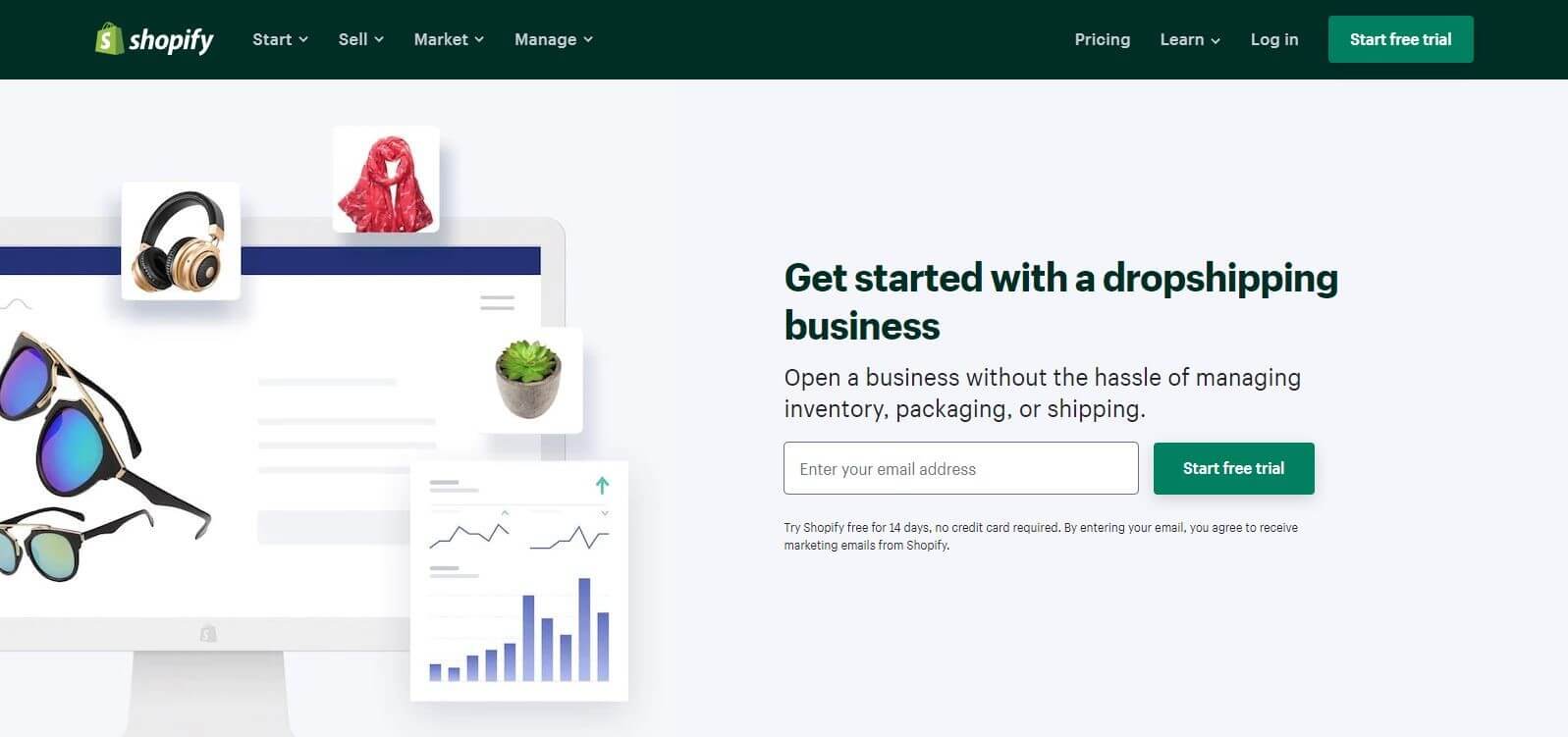
Shopify is at the forefront of eCommerce dropshipping. With website plans starting at just $29 per month, Shopify is an economical choice for startups and small businesses. Shopify connects to hundreds of vendors who stock, pack and ship products on your behalf — with little to no upfront cost. You can simply curate a collection of products in your Shopify store, market your brand and dropship vendors will take care of the rest.
What is Dropshipping?
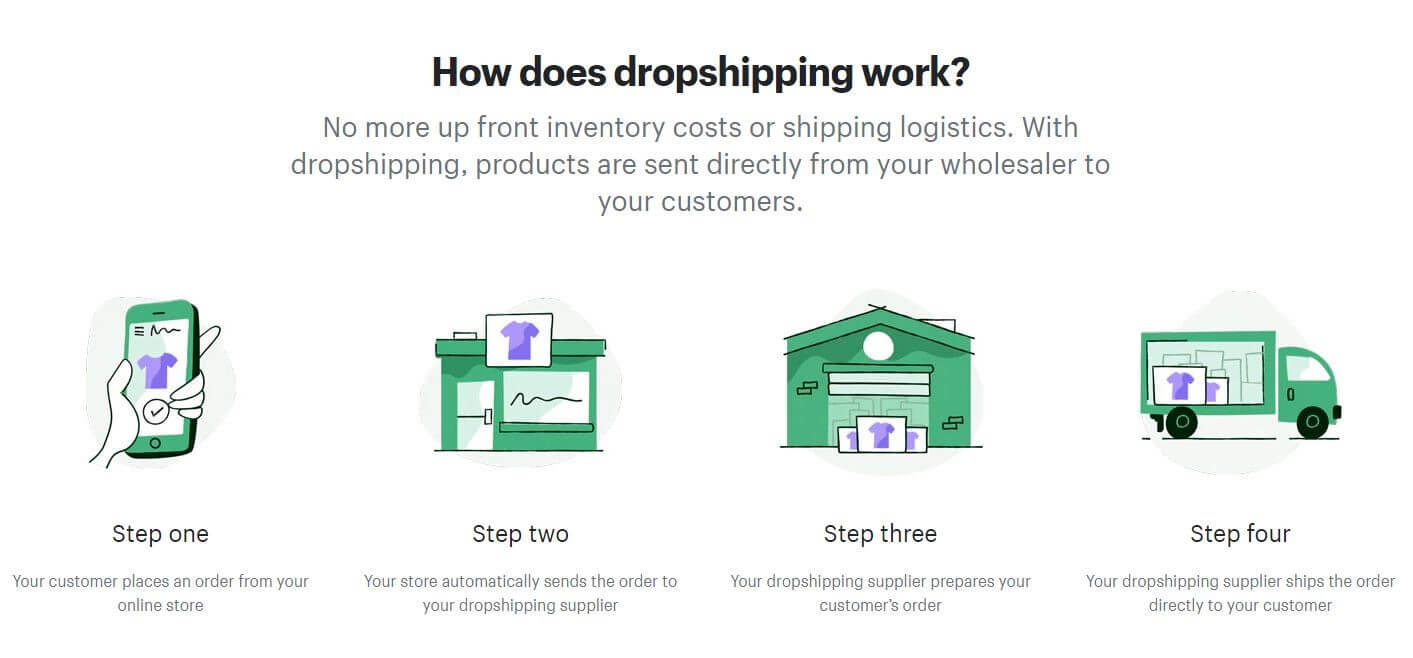
Dropshipping is a business model that allows you to start an online business and sell products to your customers without having to house your own physical inventory. Instead, when a customer orders a product, your store purchases the product from a third party and ships it directly to your customer.
What makes Dropshipping different from other business models?
Dropshipping differs from other business models in that you don’t have to invest in up-front inventory and storage facilities. In other words, you don’t have to handle the product directly. In fact, you don’t even pay for the products you sell until a customer actually places an order and your dropship vendor ships it out on your behalf. Only then are you billed the cost of the product.
This makes dropshipping ideal for startups, side gigs and all types of other businesses looking for a low-cost launch with little to no investment.
How does dropshipping work on Shopify?
There are two common approaches for dropshipping on Shopify, which is either to find a supplier located anywhere in the world and use their database, or use a Shopify app that connects your store to thousands of dropship suppliers. For the latter, Shopify recommends DSers‑AliExpress Dropshipping, a marketplace app developed inhouse that helps independent business owners find products to sell.
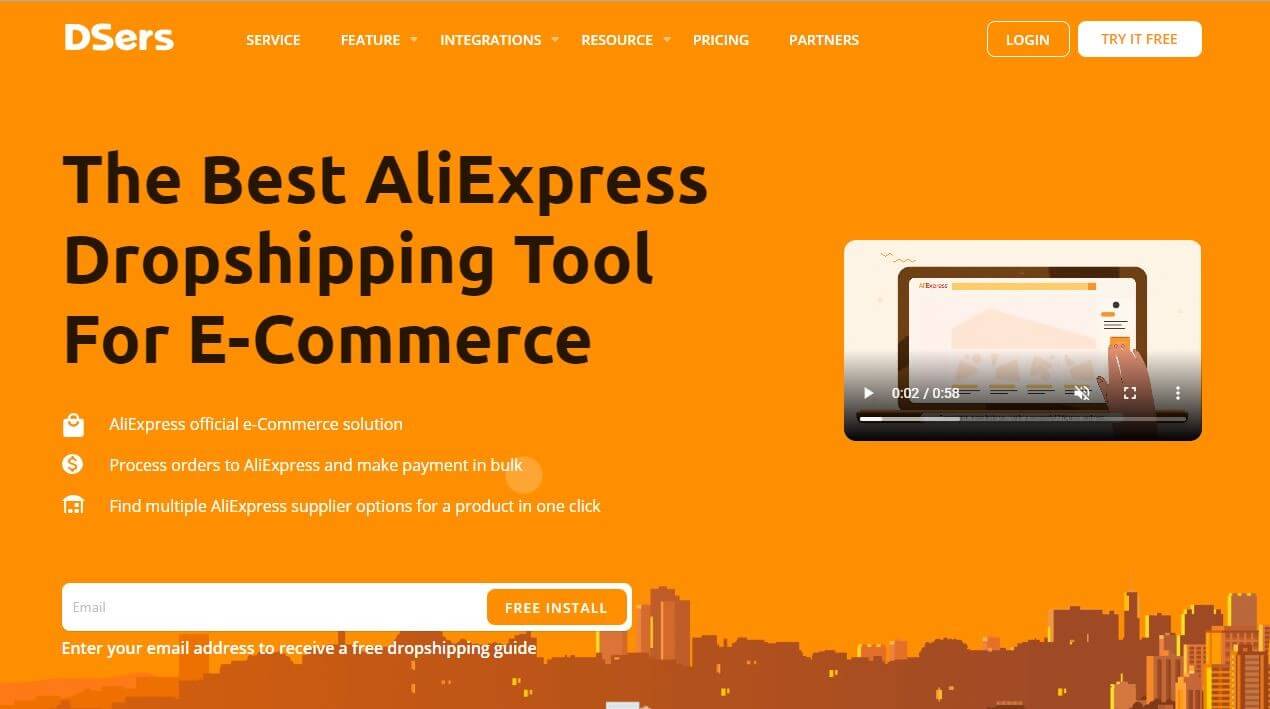
Through DSers, you can browse AliExpress, a popular reliable retail service where you can buy products at a cheaper price than you would domestically. Once you have selected a few products that you like, you can then import them directly to your Shopify store with just a click. When a customer buys a product, all you need to do is to check that the details are correct, such as the customer’s name and shipping address, then click the ‘order’ button. The AliExpress supplier handles the rest.
Of course, DSers is not the only marketplace app that you can use. There are other dropshipping apps that you can use such as:
- Printful: An on-demand printing and fulfilment company that lets you use their customised printing, labelling and packaging service to sell customised products.
- Dripshipper: A coffee supplier that lets you create private label coffee products with your logo on it.
- Modalyst: A dropship goods marketplace that connects you to thousands of fast shipping suppliers in the US and Europe.
What makes dropshipping so good?
Still unsure about whether dropshipping is for you? Here are a few more compelling reasons for you to consider dropshipping for your business.
- Low Startup Costs
One of the biggest advantages to dropshipping is that it allows you to launch an eCommerce business without having to invest thousands of dollars in inventory or a physical store. In the past, retailers did not have this luxury and had to spend a huge sum of money acquiring inventory.
Today with the dropshipping business model, you are not required to purchase a product until you have already made a sale and have been paid by the customer. This greatly reduces the up-front inventory costs which makes it possible to launch a successful dropshipping business with very little money.
- Low overhead
By removing the need to maintain physical inventory, dropshipping also reduces the overhead retailers face. With dropshipping, you no longer need to:
- Spend time tracking your inventory
- Manage the warehouse or infrastructure that houses it
- Manage packaging and shipping
- Manage stock levels
Conclusion
That brings us to the end of our article. We hope that you have a better idea of whether Shopify is a suitable eCommerce platform for your business, and if you are an existing user of Shopify, we hope that you’ll be able to make full use of it to power your business.
Still not sure if Shopify is for you? Here at eFusion Technology we are more than happy to assist you with custom design, business strategy and advisory, technical assistance as well as content strategy.

